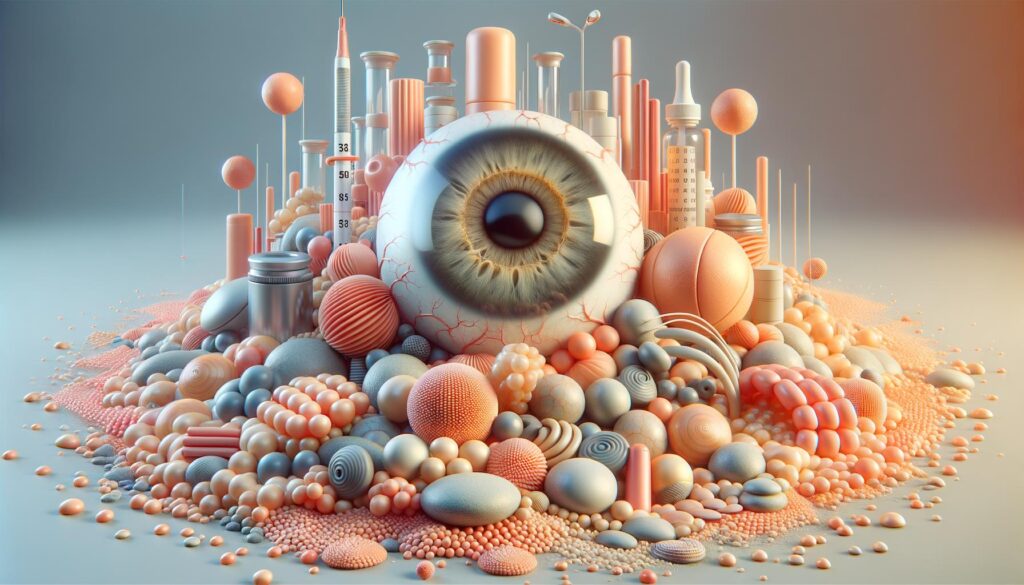Understanding Macular Degeneration: A Deep Dive into Eye Health

What is Macular Degeneration?
Macular degeneration, often referred to as age-related macular degeneration (AMD), is an eye condition that affects the macula, a small part of the retina responsible for sharp, central vision. This disease is one of the leading causes of vision loss among people aged 50 and older. There are two primary types of macular degeneration: dry and wet. The dry form is more common and is characterized by the thinning of the macula. Wet macular degeneration, although less common, typically leads to faster vision loss and occurs when abnormal blood vessels grow under the retina. Understanding these types is crucial as they progress differently and require distinct management approaches.
Causes and Risk Factors
The exact cause of macular degeneration isn’t completely understood, but there are known factors that increase the likelihood of its development. Age is the most significant risk factor, with people over 60 being at a higher risk. Other factors include:
- Genetics: A family history of macular degeneration can increase risk.
- Smoking: Tobacco use significantly raises the risk of AMD.
- Obesity: Being overweight increases the chance of early or intermediate stage AMD progressing to the severe form.
- High blood pressure and cardiovascular diseases:noted for their detrimental effect on eye health.
While some of these factors, like age and genetics, cannot be modified, lifestyle changes can significantly mitigate the risk.
Symptoms to Watch For
Many might not realize they have macular degeneration until it begins to significantly affect their vision. Recognizing early symptoms can lead to prompt diagnosis and treatment, which might slow the progression. Common symptoms include:
- Distorted vision
- Difficulty seeing in low light
- Printed words appearing blurry
- Increased need for bright light when reading or doing close work
If you notice these symptoms, it is essential to consult with an eye care professional for a full examination.
Diagnosis and Treatment
A comprehensive dilated eye exam by an ophthalmologist or optometrist can diagnose macular degeneration. During the examination, photographs of the retina are taken to identify and monitor the condition. While there is no cure for macular degeneration, several treatment options can help slow its progression and prevent severe vision loss, especially if caught in the early stages. Treatments include:
- Anti-VEGF therapy, which involves injections to reduce the number of abnormal blood vessels in the eye.
- Laser therapy to destroy these blood vessels.
- Vitamin supplements designed specifically to slow AMD progression.
- Low vision aids to assist with everyday tasks.
Early detection remains a powerful ally in managing this condition.
Lifestyle Adjustments for Management and Prevention
In addition to medical treatments, certain lifestyle adjustments can help manage macular degeneration:
- Maintaining a healthy diet rich in leafy greens, fish, and fruits known to benefit eye health.
- Quitting smoking and reducing alcohol consumption.
- Regular eye exams to monitor changes in vision and eye health.
- Protecting eyes from UV exposure by wearing sunglasses outside.
These proactive steps not only support overall health but are particularly impactful in reducing the risk and progression of macular degeneration.
Conclusion
Macular degeneration, though a leading cause of vision impairment, can be managed effectively with timely intervention and lifestyle changes. By staying informed and vigilant for symptoms, individuals can work closely with healthcare professionals to preserve their vision and quality of life. Regular eye check-ups and adopting a healthy lifestyle remain crucial strategies in battling this condition. Addressing risk factors within our control and seeking professional advice are key components in this ongoing effort to maintain eye health.
